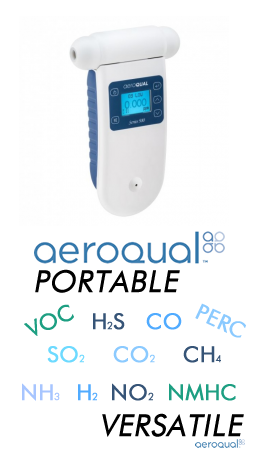-
Hydrogen:
Other Names
Dihydrogen
Chemical Formula
H 2
CAS Number
1333-74-0
Industry Uses
Chemical Synthesis; Welding and Cutting
Health Risks
Suffocation; Frostbite
Vapor Pressure
1.24E06 mmHg
Water Solubility
Low Solu...
-
Hydrogen Cyanide:
Other Names
Hydrocyanic acid; Formonitrile; Prussic Acid
Chemical Formula
HCN
CAS Number
74-90-8
Industry Uses
Chemistry Laboratories; Fumigation
Health Risks
Irritation of eyes, skin, and respiratory system; Organ Failure; Death
Vapor Pressure
630 mmHg
...
-
Hydrogen Bromide:
Other Names
Hydrobromic Acid
Chemical Formula
HBr
CAS Number
10035-10-6
Industry Uses
Chemistry Laboratories; Flow-Type Batteries
Health Risks
Irritation of eyes, skin, and respiratory system; Burns and Frostbite
Vapor Pressure
20 atm
Water Solubility
...
-
Hydrogen Chloride:
Other Names
Hydrochloric Acid; Muriatic Acid
Chemical Formula
HCl
CAS Number
7647-01-0
Industry Uses
Chemistry Laboratories; Fertilizers; Cleaners; Dyes
Health Risks
Irritation of eyes, skin, and respiratory system; Burns and Frostbite
Vapor Pressure
40.5 atm
...
-
Hydrogen Fluoride:
Other Names
Hydrofluoric Acid; Fluorhydric Acid; Fluorane
Chemical Formula
HF
CAS Number
7664-39-3
Industry Uses
Chemistry Laboratories; Aluminum Production; Glass Etching
Health Risks
Irritation of eyes, skin, and respiratory system; Pulmonary Edema; Fluorosis
Vapor Pressure
...
-
Hydrogen Peroxide:
Other Names
Oxydol; Perhydrol
Chemical Formula
H 2 O 2
CAS Number
7722-84-1
Industry Uses
Anti-Infective; Ripening Agent; Bleach
Health Risks
Irritation of eyes and mucous membranes; Dermal Burns
Vapor Pressure
1.97 mmHg
Water Solubility
M...
-
Hydrogen Selenide:
Other Names
Dihydrogen Selenide; Dihydridoselenium
Chemical Formula
H 2 Se
CAS Number
7783 – 07 – 5
Industry Uses
Chemical Laboratories; Cancer Prevention
Health Risks
Irritation of eyes and mucous membranes; Cold-like symptoms;
Vapor Pressure
9.5 atm
...
-
Hydrogen Sulfide:
Other Names
Hydrosulfuric Acid; Sulfane; Dihydrogen Monosulfide
Chemical Formula
H 2 S
CAS Number
7783 – 06 – 4
Industry Uses
Chemical Laboratories; Metallurgy
Health Risks
Irritation of eyes and mucous membranes; Convulsions; Headaches, Dizziness
Vapor Pressure
...
-
Gas Information
Information on gasses and what monitor may be right for you can be found at the links below.
Ammonia
Carbon Monoxide
Hydrogen Sulfide
Nitrogen Dioxide
Ozone
Perchloroethylene
Volatile Organic Compound (VOC)
Manuals
Find operation manuals here
Specif...
-
Aeroqual
Aeroqual SM-70 Controller
Aeroqual Series-100 Controller
Aeroqual Series-200 Monitor Quick Start Guide
Aeroqual Series-200 Monitor User Manual
Aeroqual Series-300 Monitor Quick Start guide
Aeroqual Series-300 Monitor User Manual
Aeroqual Series-500 Monitor Quick Start guide
Aeroqual Series-500 Monitor User Manual
Aeroqual Series-320 Monitor User Manual
Aeroqual Series-520 Monitor User Manual
Aeroqual Series-900 Controller/Transmitter
Aer...
-
The Portasens is known as a great ambient air portable gas leak detector that features: - electrochemical smart-cell sensor (which can be calibrated independently of the unit) - available to measure over 30 types of gases - a rugged internal sample pump - excellent accuracy and repeatability - easy to read back-lit LED display - flexible wand for pinpointing leak points - datalogging capabilities - integrated audible alarms
Because of the many attractive features a...
-
Acid Gas:
What is Acid Gas:
Acid gas is a type of natural gas or any other gas mixture that contains significant quantities of hydrogen sulfide, carbon dioxide, sulfur oxides, nitrogen oxides, hydrogen halides, or similar acidic gases. Acid gases form acidic solutions when dissolved in water. Before a raw natural gas containing hydrogen sulfide or carbon dioxide can be used, the gas must be treated to reduce impurities to acceptable levels. This is commonly done with amine gas t...
-
Hydrocarbons:
What are Hydrocarbons:
Hydrocarbons are organic compounds consisting entirely of hydrogen and carbon. Most hydrocarbons found on earth naturally occur in crude oil, where decomposed organic matter provides an abundance of carbon and hydrogen. Hydrocarbons are a primary energy source for current civilizations. Extracted hydrocarbons in liquid form are called petroleum, and extracted hydrocarbons in gas form are called natural gas. There are three types of hydrocar...
-
Phosphine:
Other Names
Phosphane, Hydrogen phosphide, Phosphorus trihydride; Phosphorus hydride
Chemical Formula
PH 3
CAS Number
7803 – 51 – 2
Industry Uses
Fumigation; Pesticides; Microelectronics
Health Risks
Irritation; Vomiting; Multi-Organ system damage; convulsions; death
Vapor Pressu...
-
Chloride:
Other Names
Chloride ion
Chemical Formula
Cl -
CAS Number
16887 – 00 – 6
Industry Uses
Salts; Chemical Intermediate; Water Treatment
Health Risks
Skin reaction
What is Chloride:
Chloride is a chlorine anion that forms the negatively charged part of many salts. It is the mo...
-
Sulfide:
Other Names
Sulphide; Sulfide ion; Sulfanediide
Chemical Formula
S -2
CAS Number
18496 – 25 – 8
Industry Uses
Metallurgy; Chemical Manufacture; Chemical Laboratories; Fertilizers
Health Risks
Reacts to form Toxic Gas
What is Sulfide:
Sulfide is an inorganic anion of sulfur. It is a...
-
Benzene:
Other Names
Chemical Formula
C6H6
CAS Number
71 - 43 - 2
Industry Uses
Rubbers, Lubricants, Dyes, Detergents, Drugs, Explosives, and Pesticides
Health Risks
Cancer
Vapor Pressure
12.7 kPa (25 °C) 24.4 kPa (40 °C) 181 kPa (100 °C
Water Solubility
Reacts with Water
...
-
Combustible Gas:
What is Combustble Gas:
Combustible gas is a gas that can burn in the air or in Oxygen. Examples of combustible gases are Hydrogen, Methane, Propane, Iso-butane. Mixture of a certain amount of combustible gas and Oxygen will explode in the presence of an ignition source. Combustible gas is a typical cause of gas explosion accidents.
Health Risks:
Breathing in combustible gas vapor can cause headache, nausea, and dizziness. Extremely high level...















